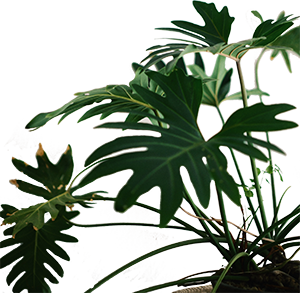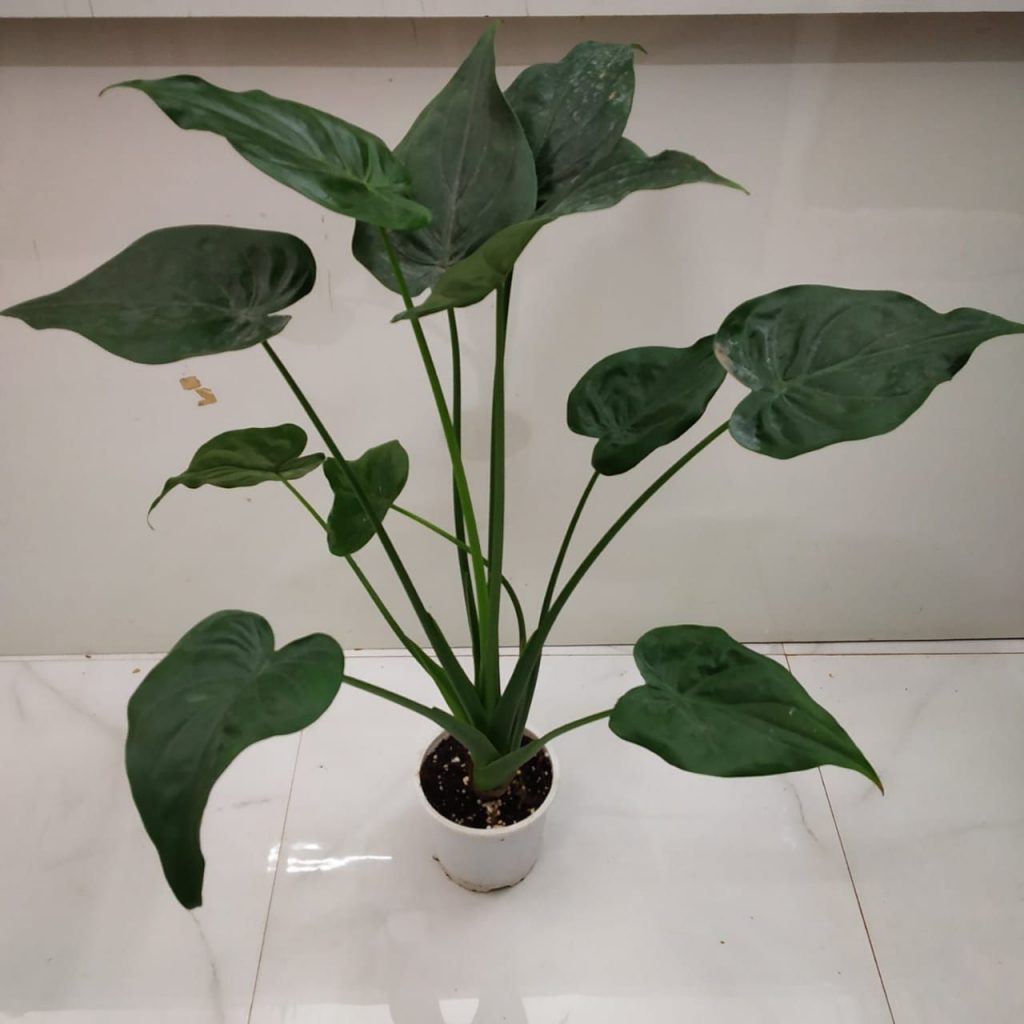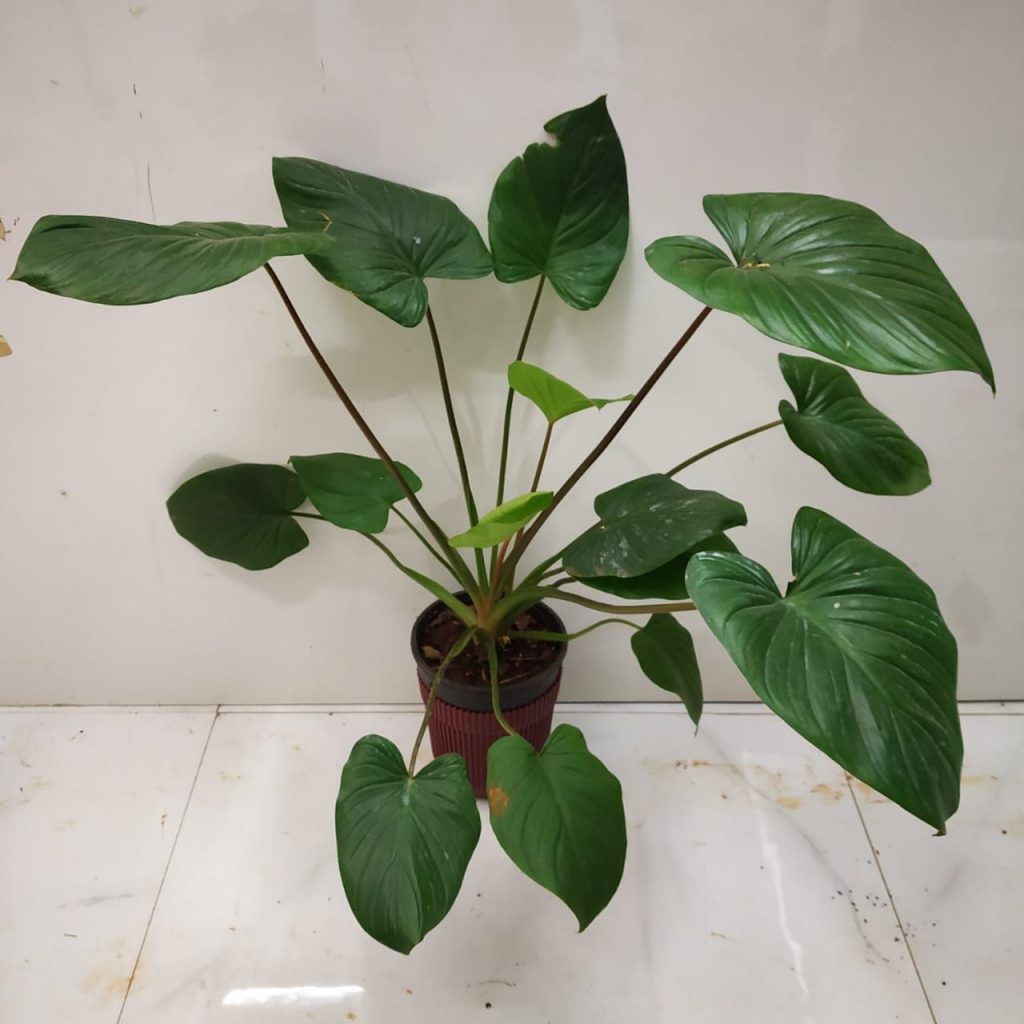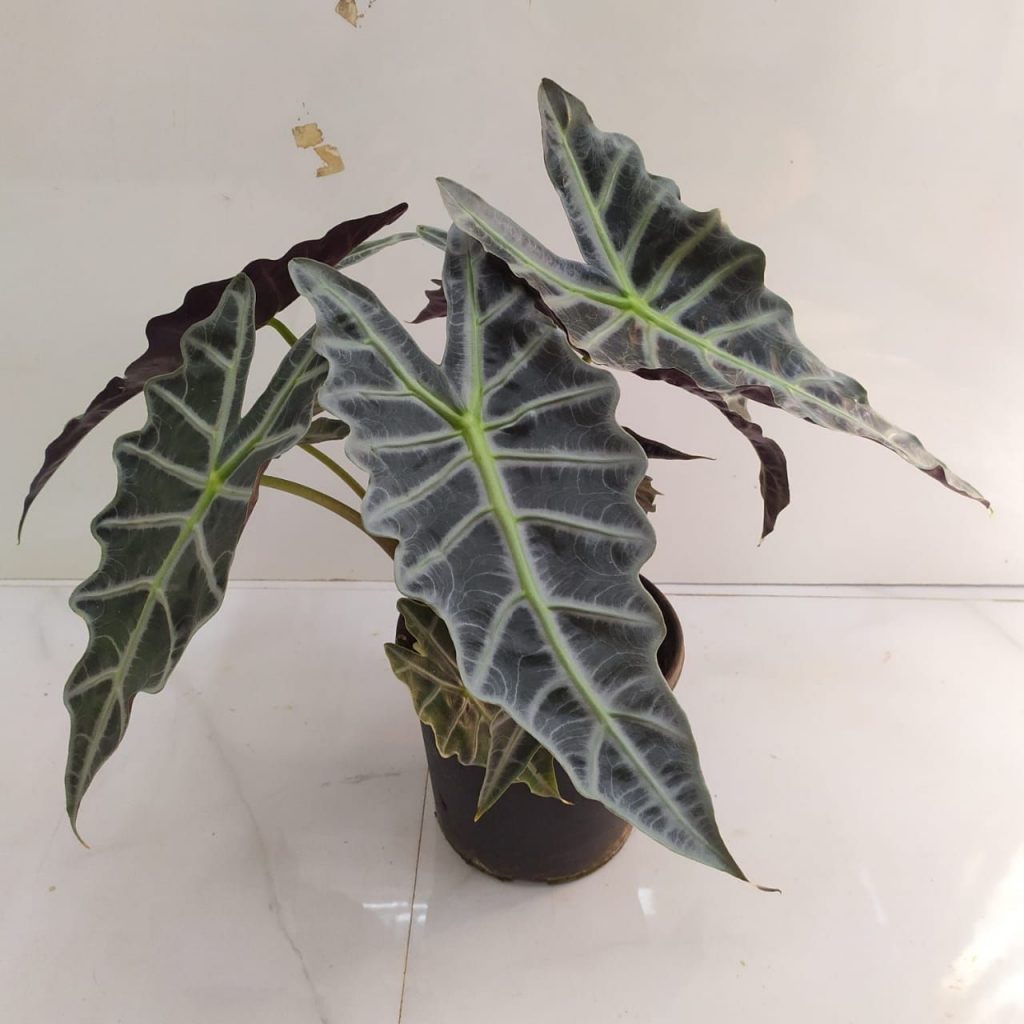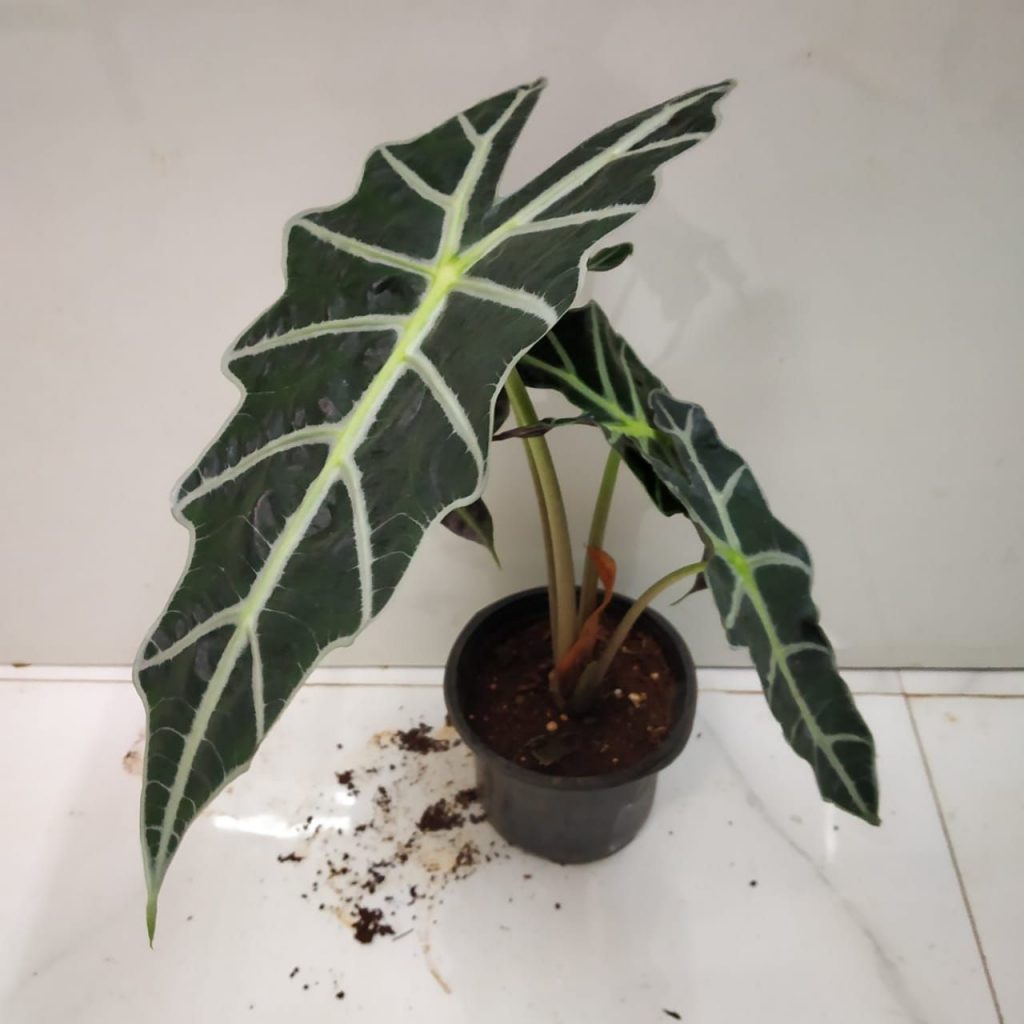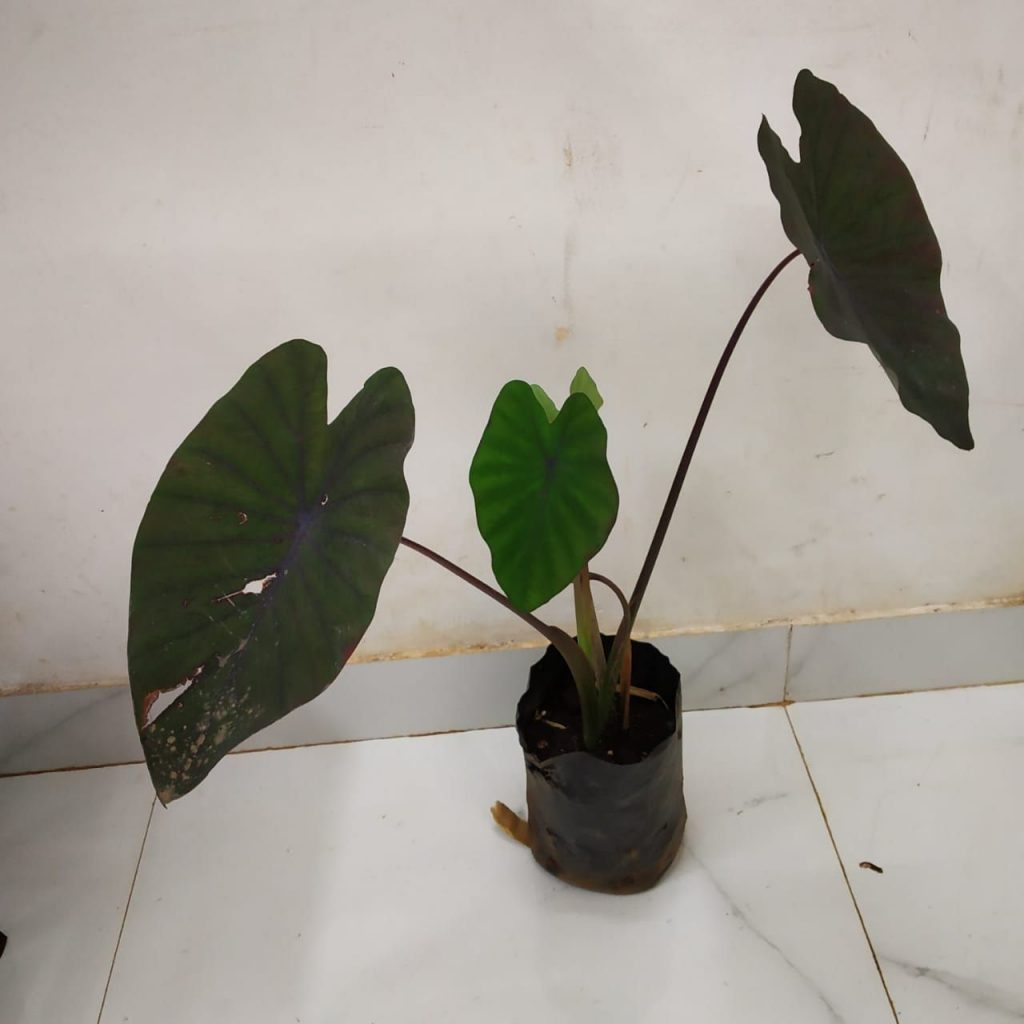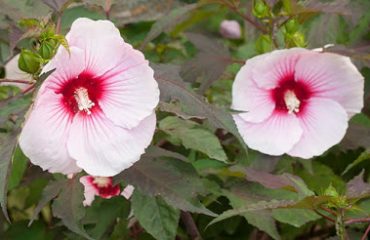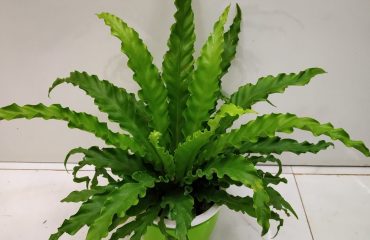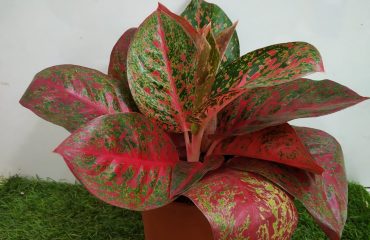How to care for an Alocasia
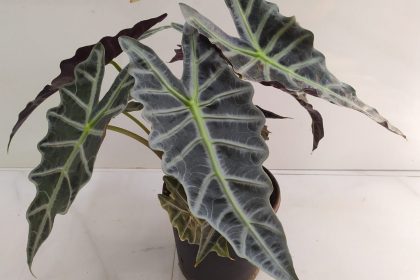
If you’re an indoor plant enthusiast looking for a unique addition to your collection of houseplants, then Alocasia may be the ideal plant for you. Also known as the African mask or Kris plant, Alocasia doesn’t come from Africa at all. It gets its name from its resemblance to the hand carved ceremonial masks found there, but actually hails from the Philippine Islands.
There are over 50 species of the Kris plant and Alocasia hybrids abound, making it difficult to identify the exact genetic history of the plants typically sold in catalogs and stores. Grown for its striking foliage, the African mask plant is not an easy care houseplant
Elephant ear plants clearly get their nickname from the wonderfully gigantic size of their heart-shaped (or elephant ear-shaped!) leaves. There are many varieties and cultivars that span the spectrum of green, purple, white variegated leaves.
Light
Needs vary from shade to full sunlight, depending on the variety. Ask the grower if the plant is sun-trained. Leaf color tends to be better among plants that grow best with more light.
Soil
Plant in loose, well-drained potting mix or a crumbly loamy soil. Try to let the top few inches of soil become nearly dry before watering. This will help keep it evenly moist. Soggy soil makes the plant susceptible to many fungal infections.
Water
Keep Alocasia plants moist all year; they are water-loving plants. There is a fine line with these plants. You want to keep the soil moist, but not soggy. They require less water during the winter months because the plant is dormant.
Temperature and Humidity
Alocasias will start to suffer below 60 degrees Fahrenheit. Some varieties will die back during colder weather and resprout from the rhizome. They thrive in very humid environments. To raise the humidity around your plant, place it on a tray filled with pebbles and then add water until it rises to just below the bottom of the pot. Keep them away from cold drafts from windows, doors, and air conditioning.
Fertilizer
Alocasias can be heavy feeders, especially large specimens. Feed with liquid fertilizer during the growing season or frequent, small applications of granule fertilizer.
Potting and Repotting
Repot Alocasia varieties annually into larger pots with fresh, free-draining potting soil. Also, it’s best to divide the rhizome annually to keep the plant a manageable size and increase your collection.
Propagating Alocasia Plants
Most Alocasia plants can be propagated by clump or rhizome division. Cut off a piece of the underground rhizome and pot it up separately, then keep it warm and moist until new growth begins.
Varieties of Alocasia Plants
There are about 70 species of Alocasia, as well as dozens of hybrids. Alocasia plants are primarily hybridized because of the appeal of their leaf form, color, and sizes. Some include:
- The jewel-like Amazon lily (Alocasia Amazonica), which can grow to two feet tall and wide
- The truly enormous Alocasia macrorrhizos, whichcan grow up to 15 feet tall and eight feet wide
Additionally, the plant has been extensively hybridized. Most Alocasia species will do all right in shade, but they often appreciate slightly brighter filtered sunlight. The bigger ones can be trained to handle the full tropical sun. Keep all species warm, moist, and humid. Trim away falling leaves. Like all aroids, Alocasias flower with a typical spathe and spadix, but the flower is usually unremarkable and can even be slightly vulgar.
Common Pests and Diseases
While quite striking, these plants can be quite sensitive. A variety of diseases including crown, stem, and root rot, Leaf Spot, and Xanthamonas are particularly common with alocasia plants. Signs of diseases are typically black or dark brown spots on the leaves and a yellowish rim around the spots. Diseases can be prevented by avoiding over-watering, keeping the leaves dry, and providing proper air circulation around and near the plant.
Common pests of the Alocasia plants are mealy bugs, scale, aphids, and spider mites. Every few weeks, you can spray the plant with warm soapy water to prevent these pests. This will help keep the plant dust-free. If an infestation does occur, use an ultra-fine insecticide oil or Neem Oil. These products will kill the pests and their eggs.
Toxicity of Alocasia Plants
The Alocasia is a very poisonous plant; the leaves contain insoluble oxalate crystals. If a human or pet chews or bites into the leaves, they will release the crystals. It can cause swelling and irritation of the mouth and GI tract. Very rarely, there will be extreme swelling of the upper airway, making it difficult to breathe. Keep the plant away from children and pets and call poison control, your doctor, or vet if a person or animal ingests the plant leaves.


